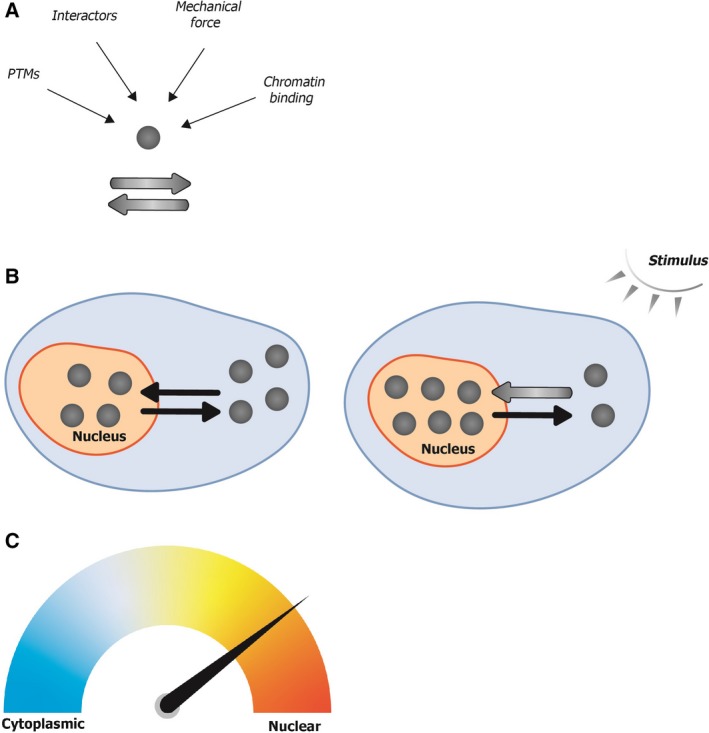Figure 1.

The balance between export and import rates dictates YAP/TAZ/Yki subcellular localization, which is a continuous and dynamic process. (A) At the single protein level, YAP/TAZ/Yki can be subject to several modes of regulation, such as post‐translational modifications (PTMs), interactions with specific proteins, binding to chromatin, and/or mechanical forces that alter nuclear pore permeability. The sum of these dictates the rates of YAP/TAZ/Yki nuclear export/import. Importantly, this nucleo‐cytoplasmic shuttling is continuously ongoing. (B) At the cellular level, the constant shuttling results in an equilibrium, making it appear as though some of the molecules reside stably in the nucleus while others remain cytoplasmic. When an activating stimulus is delivered to the cell, the balance between export and import is shifted, such that more molecules eventually end up in the nucleus. Gray circles represent single YAP/TAZ/Yki molecules. Black arrows represent the direction of translocation. A thicker gray arrow indicates a higher rate. (C) At the population level, YAP/TAZ/Yki nucleo‐cytoplasmic localization is not a binary state, but rather a range of states. The relative change between states is cell‐type‐ and/or stimulus‐dependent.
